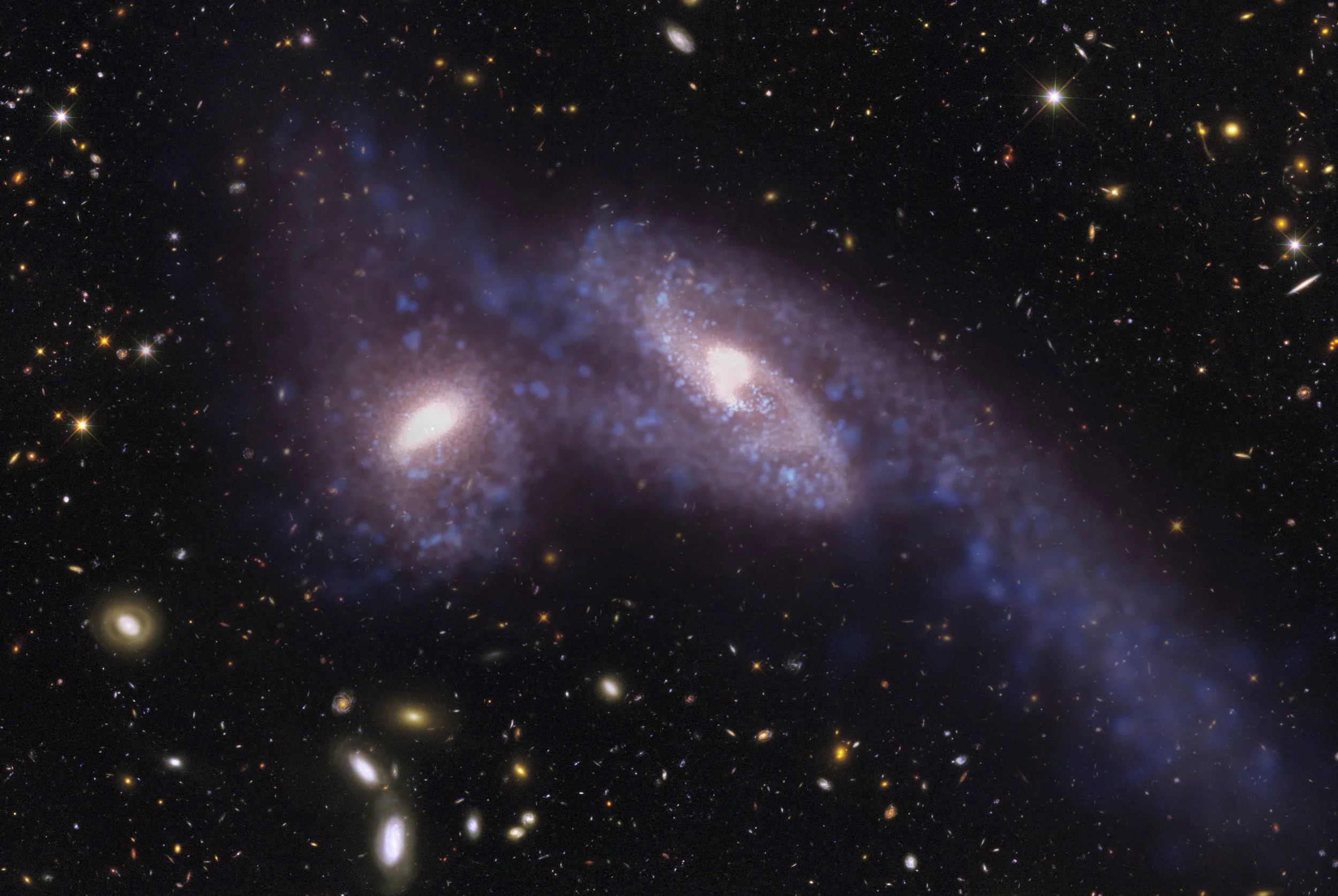Host Galaxies of Massive Black Hole Mergers
How do we identify the host galaxies of massive black hole binaries and mergers detected in gravitational waves?
Current and future lower-frequency gravitational wave experiments will detect individual massive holes binaries and mergers at the centers of galaxies, in contrast to the mergers of stellar-mass compact objects currently detected by the LIGO/Virgo interferometers at higher frequencies. Identification of the host galaxy of each binary will be critical for a variety of key science cases. However, massive black hole binaries and mergers are not expected to produce electromagnetic transients, except in some rare cases. How can we identify their host galaxy?
The host galaxies of merging massive black holes can be difficult to identify. This image shows an ongoing merger between two simulated galaxies, which will lead to the formation of a massive black hole binary. This image was produced using a cosmological simulation of galaxy formation, through stellar population synthesis and dust radiative transfer. We are using these synthetic telescope images to study the unique morphological properties of the host galaxies of massive black hole mergers.
Image credit: Jaeden Bardati
My team is currently using cosmological simulations of galaxy formation to develop new methods of identifying the host galaxies of individual massive black hole binaries and mergers detected in gravitational waves. To do this, we are focusing on the unique properties of the host galaxies of massive black hole binaries in synthetic imaging and integral field spectral datacubes. We find that SMBH binary host galaxies have both unique morphologies (e.g., bulge-dominant) in imaging, and unique stellar kinematics (e.g., slow rotation and kinematic misalignments) in integral field spectroscopy, relative to a mass- and redshift-matched control sample. These approaches have accuracies of ~90%, implying that they will be useful if other selection cuts (e.g., based on galaxy scaling relations) can narrow down the candidate host galaxies in the gravitational wave localization region to ~10 candidates. We are now currently applying these approaches to archival data of nearby galaxies, to make a prediction on which nearby galaxy will host the first individual massive black hole binary that will be detected by pulsar timing array experiments.
Students: Jaeden Bardati, Patrick Horlaville
Publications:
‘Signatures of Massive Black Hole Merger Host Galaxies from Cosmological Simulations I: Unique Galaxy Morphologies in Imaging’, Bardati, Ruan, et al. (2024), The Astrophysical Journal, 961, 34
‘Signatures of Massive Black Hole Merger Host Galaxies from Cosmological Simulations II: Unique Stellar Kinematics in Integral Field Spectroscopy’, Bardati, Ruan, et al. (2025), The Astrophysical Journal, 977, 2
‘Predicting Potential Host Galaxies of Supermassive Black Hole Binaries Based on Stellar Kinematics in Archival IFU Surveys’, Horlaville, Ruan, et al. (2025), submitted to The Astrophysical Journal (arXiv:2504.21145)
